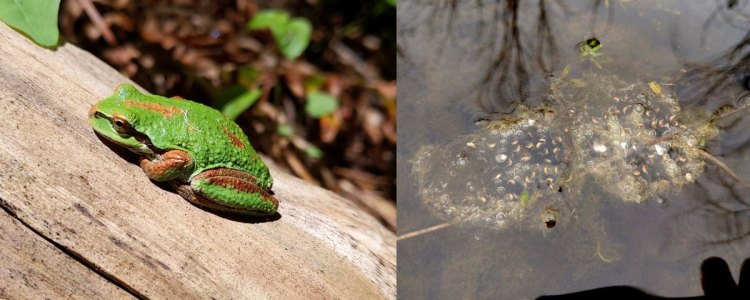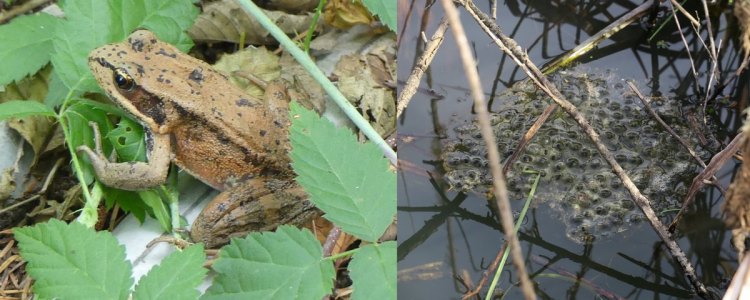As rain falls and the temperature warms up, frogs and salamanders have been out and about. Perhaps they’ve been stopping in your yard or crossing your roads at night. You may have heard them call from your local ponds, or even seen them floating in the water.
Where did they come from?
Spring is the season for amphibian migrations. In Columbia County there are six species of native frogs and salamanders that breed in lakes and ponds, but none of them live there during the winter. So every year as it warms, they dig out from their underground upland hiding spots and make the trek down to water to mate and lay eggs for the new year.
Here’s a quick rundown of the frogs and salamanders you can see here.
Open ponds
Pacific Treefrogs and Long-toed Salamanders winter under cover in meadows and woodland, but breed in open ponds and marshes. They are some of the first to emerge in spring and have been moving towards their breeding ponds since January.


Forested lakes and beaver ponds
Rough-skinned Newts, Northwestern Salamanders, and Northern Red-legged Frogs winter under logs in forested uplands and breed in forested lakes, ditches, and beaver ponds. They have been moving to the waterways since late February.



Our missing species – where are the toads?
Western Toads winter 2-4 feet deep in underground burrows and can be some of the last amphibians to emerge. They lay eggs in temporary ponds and the shallow edges of lakes. Toads have become extremely rare in Columbia County and we are uncertain if there are any viable populations left. If you have seen one, please tell us where and send us a photo if possible!

In summer baby toads can accumulate in large numbers on the edge of their breeding ponds. Here’s a little video I took of a toadlet mass in the Ochoco National Forest that my daughter and I found while hiking.
Matt and I are running the Columbia County Reptiles and Amphibians project to record these creatures. If you want to help out, just create an iNaturalist.org account and download the free app from Google Play or the Apple AppStore. Once you have the app, you can simply use the app to take a picture of any reptile or amphibian you see, and with a couple of clicks it will automatically upload the data onto our project! If you don’t want to use a smartphone, you can also take pictures with your camera and upload them to the iNaturalist.org website via computer.
Data from the project will help us understand more about our rarely studied native wildlife in Columbia County. We especially hope to know if toads and other historically present species still exist in our area. Any information you can provide will be vital.
The act of searching for reptiles and amphibians is called “herping”…..so happy herping, thank you and good luck!
